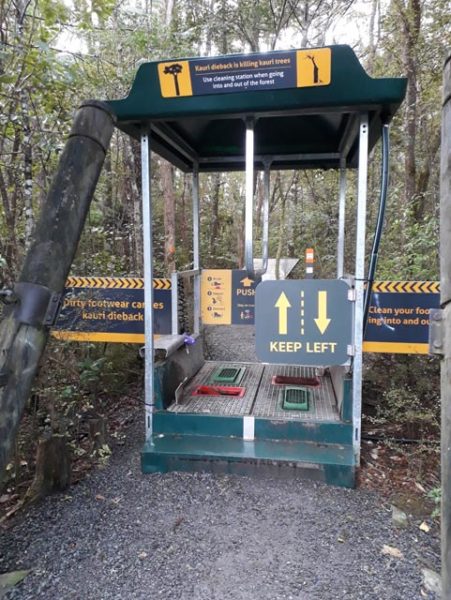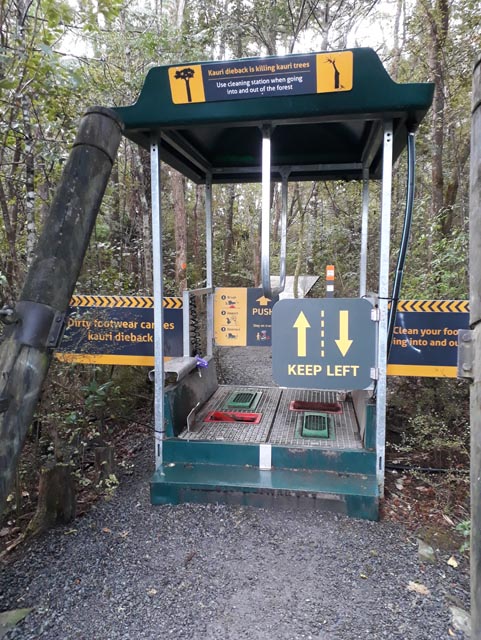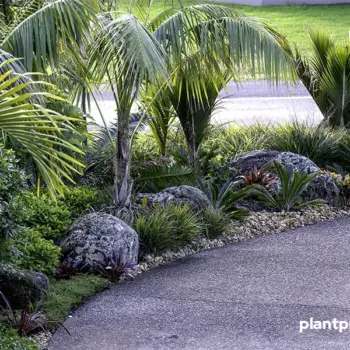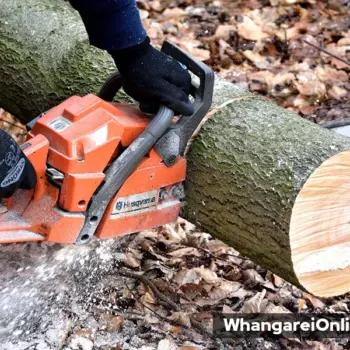
Kauri Dieback Disease in Whangarei – what it means for AH Reed Park and Mount Parihaka
Some call them the giants of the forest, and with heights over 50 metres and trunk girths up to 16 meters Kauri are among the world’s most majestic trees. They can live for more than 2000 years, however, something as tiny as a grain of soil can bring every single one of them down. The threat is called Kauri dieback disease and has already killed thousands of trees in the last few decades.
Kauri are unique to New Zealand, growing mainly throughout the Upper North Island. In Whangarei, Kauri can be found mostly in scenic reserves such as AH Reed Park and Mount Parihaka, both popular destinations for locals and tourists alike. The oldest trees at AH Reed are around 1000 years old which is only half of their estimated life span.
Māori link the health of kauri directly to the wellbeing of our forests and the people living nearby. Kauri play a vital role in our ecosystem, providing shelter for many other animals and birds and creating unique habitats for various other tree and plant species. However, if Kauri dieback keeps spreading, the look and the sound of our native forest will change forever.
What is Kauri dieback disease?
The fungus-like organism that is causing Kauri dieback disease has most likely been around since the 1950s. However, it wasn’t until 2009 that scientists finally discovered Phytophthora agathidicida and its destructive impact on our much-loved native trees. It initially infects the root system, disabling the tree to transport vital nutrients. Leaves begin to turn yellow and fall, the canopy thins out, the bark begins to bleed and over time the tree is starving to death.
Dieback affects Kauri at any age, from tiny seedlings to old giants such as Tane Manehuta. And because there seems to be no natural resistance or cure, potentially all Kauri in New Zealand are in danger of eventually disappearing. The consequences for our eco-system could be catastrophic.
Impact of Kauri dieback in Whangarei
In Northland most Kauri are scattered around thousands of hectares of either privately owned land or areas managed by the Department of Conservation (DOC). In Whangarei they mostly grow in areas around AH Reed Park and Mount Parihaka with tracks leading straight through Kauri groves and over exposed roots. So far no incidents of Kauri dieback have been reported, but the disease has arrived in many other Northland areas including Glenbervie forest and the tourist destination Waipoua Forest.
Protecting Kauri for the future
Since scientists have discovered Kauri dieback and were able to undertake further research, it has become clear that muddy footwear is one of the main ways the disease is being spread. A nationwide campaign led by DOC has been rolled out in 2014 to keep Kauri standing tall for future generations, and popular bush tracks and scenic reserves have seen recent upgrades carried out by Whangarei-based company Plantpro to help keep Kauri dieback at bay.
In accordance with the Kauri Dieback Recreation Project several cleaning stations have been established at the major entrance to AH Reed Park as well as on tracks leading into Parihaka. These stations along with track upgrades are the main initiatives to protect our giant trees. However, as a last resort DOC staff will potentially close any tracks permanently that are too risky to use or in areas where the disease has already been found.
In order to keep enjoying Whangarei bush walks everyone needs to play their part. If you plan on heading into AH Reed Park, Parihaka or any other native forest where Kauri is present, please follow the simple steps below.
Stick to the track
Don’t leave designated tracks or head into the forest and stay clear of exposed roots.
Use cleaning stations
These are usually located where you enter and leave native bush. Check your footwear and other equipment such as walking poles for mud and wash and disinfect as much as possible. Follow the instructions on the signage.
Respect closures
If tracks are closed or diversions have been put into place, adhere to these and don’t go off on your own.


